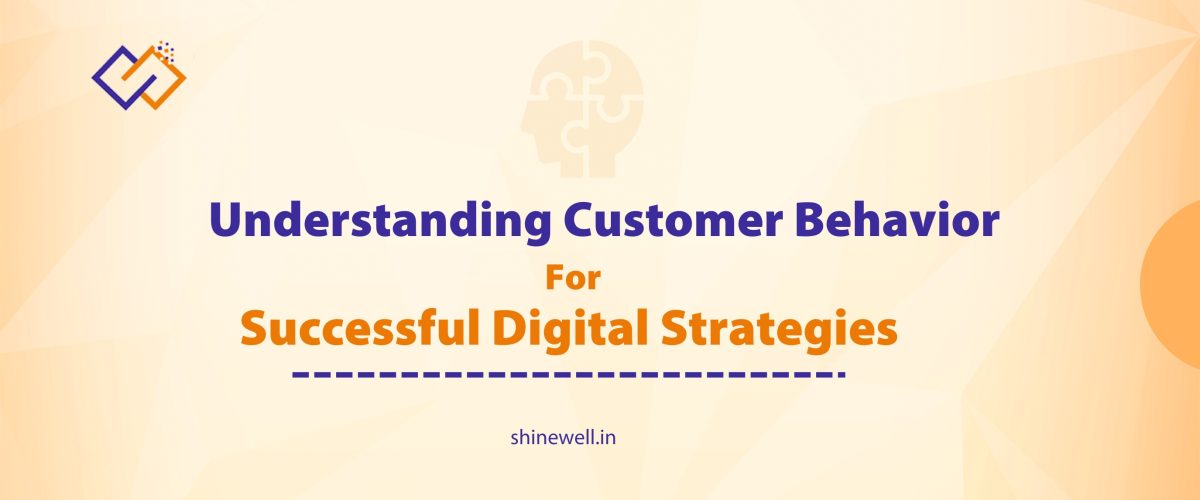
Hello, fellow entrepreneurs! In this age of rapid digital growth, how well do you truly know the minds of your target audience? Let us agree that understanding your customers’ behaviour is key to building strong relationships, meeting their needs, and driving business growth. It involves analyzing how they interact with your brand, what motivates their decisions, and what influences their satisfaction. By observing patterns, gathering feedback, and leveraging data, businesses can uncover valuable insights to improve their products, services, and overall customer experience. Different industries require unique approaches, as consumer expectations vary widely across sectors. Whether through analytics, surveys, or social listening, understanding behaviour helps create the best digital marketing strategies that resonate with your audience. It also empowers businesses to predict future needs and adapt to market trends. Ultimately, knowing your customers better enables you to build trust and foster loyalty. Below is a breakdown based on business types:
1. E-Commerce Businesses
If you run an E-commerce business, you must rely heavily on digital interactions and data to interpret customer behaviour. Here’s the list of some important metrics to consider:
- Website Analytics: Tools like Google Analytics track user actions such as page views, session duration, and cart abandonment rates.
- Heatmaps: Platforms like Hotjar reveal user interaction patterns, such as clicks and scrolls, to highlight areas of interest.
- Behavioural Segmentation: Group customers based on factors like purchase frequency, average order value, or browsing habits.
- Customer Reviews: Analyzing product reviews provides insights into customer preferences and dissatisfaction.
- Personalized Marketing: Leverage data to deliver targeted email campaigns or recommend products aligned with browsing history.
Monitoring these key areas will help you understand your consumer’s behaviour & set-up the best digital marketing strategies in place.
2. Service-Based Businesses
Service-oriented businesses focus on understanding customer motivations and satisfaction. If you own one such business, then your common strategies must include:
- Customer Feedback: Collecting responses via surveys, online reviews, or in-person comment cards to gain actionable insights.
- Booking Patterns: Analyze when and how customers book services to uncover trends.
- Churn Analysis: Study the reasons customers stop using a service and address those pain points to retain them.
- Social Listening: Monitor mentions on social platforms to understand customer sentiment about your brand or industry.
- Journey Mapping: Map out the customer journey to identify friction points and optimize the experience.
To truly understand your consumers and develop winning digital marketing strategies, it’s essential to monitor these key areas.
3. B2B Businesses
Shinewell, India’s leading digital marketing agency, having worked with several businesses from across multiple industry segments, we understand that B2B organizations face longer sales cycles and work with multiple stakeholders. And, therefore making it crucial for them to monitor consumer behaviour. Key strategies to consider:
- CRM Tools: Using platforms like Salesforce to manage customer interactions, monitor sales pipelines, and track client activity.
- Account-Based Marketing (ABM): Developing tailored marketing campaigns for high-value accounts.
- Industry Trends: Stay informed about challenges and shifts within the industries your clients operate in.
- Customer Interviews: Conduct detailed conversations with decision-makers to uncover their goals and concerns & address their pain points.
- Engagement Metrics: Tracking interactions with your content, such as email responses, webinar attendance, and proposal views.
By keeping a close eye on these key areas, you can gain a deep understanding of consumer behavior and implement the best possible strategies.
4. B2C (Business-to-Consumer) Businesses
As a B2C business, you must focus on understanding individual customer preferences and triggers that drive purchase decisions. Effective methods include:
- Website Analytics: Track user activity on your site, including bounce rates, conversion paths, and time spent on pages.
- Social Media Insights: Analyze audience behaviour on platforms like Facebook, Instagram, Twitter to identify popular content and demographics.
- Customer Segmentation: Divide customers into segments based on behavior, demographics, or purchase history.
- Purchase Data Analysis: Study frequently purchased products, seasonal trends, and price sensitivity.
- Surveys and Feedback: Use surveys to collect information about preferences, satisfaction, and pain points.
- Sentiment Analysis: Analyze online reviews and ratings to understand customer feelings about your products or services.
- Personalization: Utilize tools like email marketing and product recommendation engines to offer tailored experiences.
5. Local/Small Businesses
Local businesses thrive on personal connections and understanding community needs. These methods are useful in analysing their behaviour:
- Community Engagement: Participate in or organize local events to connect with customers and understand their preferences.
- Direct Feedback: Engage customers in casual conversations to gather insights.
- Loyalty Programs: Track repeat visits and preferences through loyalty cards or apps.
- Social Media Interaction: Use platforms like Instagram and Facebook to interact with the local audience and understand trends.
- Peak Hours Analysis: Monitor foot traffic patterns to optimize promotions and staffing.
6. Digital Services or SaaS Businesses
Digital businesses depend mostly on analytics to understand user behavior. Key approaches include:
- User Analytics: Track how customers interact with your app or platform.
- Feature Adoption Rates: Identify which features are most and least popular.
- Support Ticket Analysis: Review common issues raised by customers to pinpoint pain points.
- A/B Testing: Experiment with different interface designs, features, or pricing models to identify what resonates most.
- Churn Metrics: Analyze why customers cancel or stop using the service and make adjustments accordingly.
These strategies offer crucial insights that allow you to gain a deeper understanding of your customers’ behaviours and preferences.
Conclusion:
Through this blog, we have attempted to delve into the customer behavior of different businesses, providing insights into their online interactions, preferences, and pain points. We have tried to give you an inside view, understanding that, as a leading digital marketing agency, we grasp the pain points of business owners. By leveraging these insights, you can implement effective stitch digital strategies to attract genuine leads and drive maximum revenue growth.
FAQs
- Why is it important to understand customer behaviour?
It helps businesses tailor offerings, improve satisfaction, and drive growth by meeting customer needs. - What tools can businesses use?
Tools like Google Analytics, CRM systems, social media insights, and surveys provide valuable data on customer actions. - How can small businesses understand customer behaviour?
Small businesses can gather feedback through surveys, monitor social media, and observe in-store interactions. - What challenges do businesses face?
Challenges include data overload, interpreting analytics, changing preferences, and privacy concerns. - How can businesses act on insights?
Use insights to refine marketing, improve products, and offer personalized experiences, like adjusting pricing or shipping policies.





Post a Comment
You must be logged in to post a comment.